In 1919, Heinrich Barkhausen discovered that magnetizing a metal like iron is not a continuous process, but occurs in tiny jumps, which can be heard if a coil is placed around the metal and connected to an amplifier and a speaker.
The clicks sound like a Geiger counter, and are generated as tiny areas in the metal (called magnetic domains) suddenly merge together.
The equipment needed to hear these sounds is quite simple:
What you need
- A bolt — 2.5 inches long and 0.25 inches in diameter.
- Two washers, and a nut that fits the bolt.
- 60 feet of 22 gauge enamel coated magnet wire.
- An amplifier — a stereo will work, or a tape recorder, or a sound card, but I used a cheap Radio Shack amplified speaker.
- A cable with a plug to match your amplifier.
- A strong magnet. I used one of our 12 millimeter cube super magnets. Weaker magnets might work, but I haven't tried them.
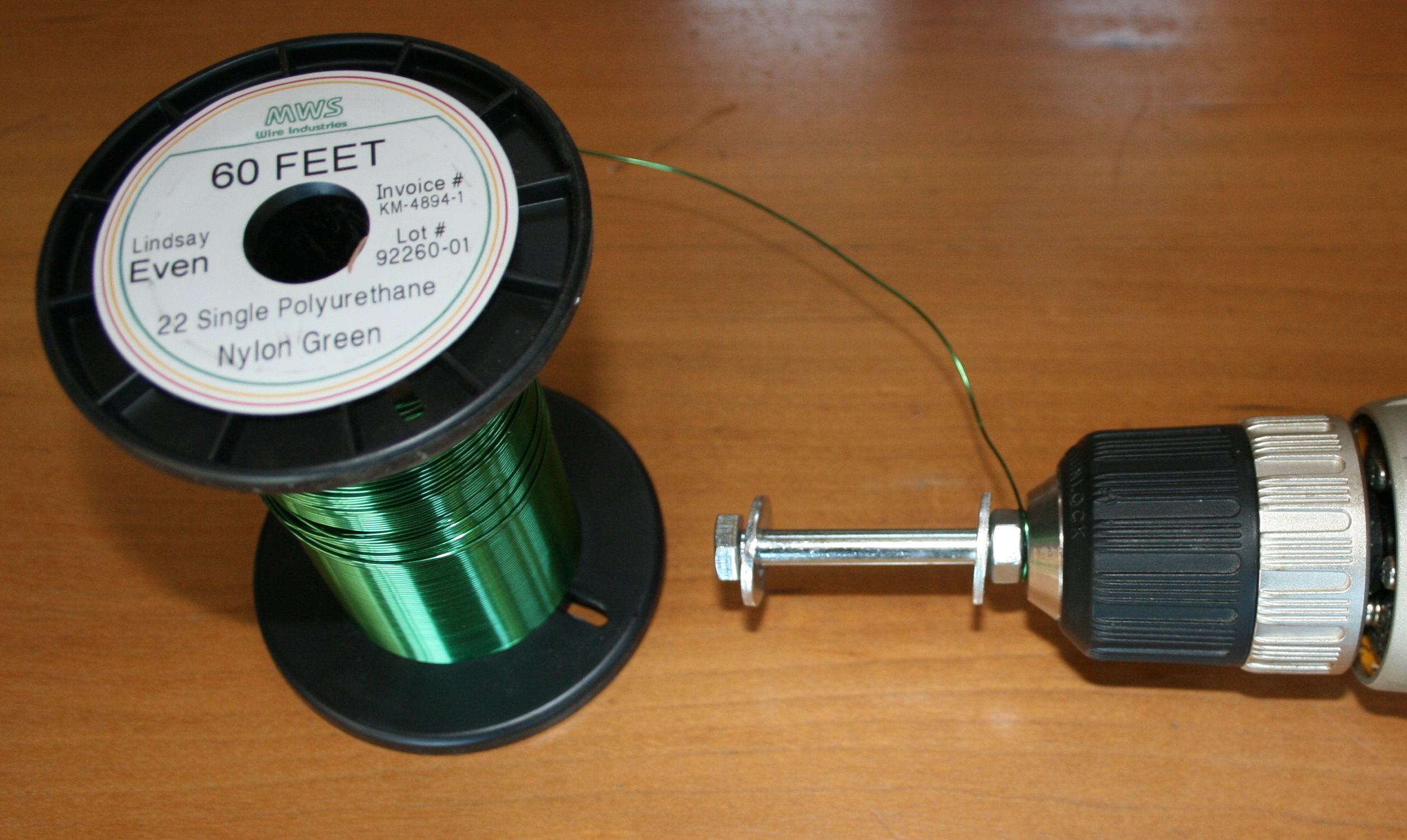
We start by putting the washers and nut onto the bolt, and putting the threaded end of the bolt into the chuck of a variable speed drill. You can wind the coil by hand if you like, but the drill will speed things up considerably.
Stick a few inches of the insulated magnet wire into the drill chuck next to the threaded end of the bolt, and start winding the wire around the bolt, between the two washers.
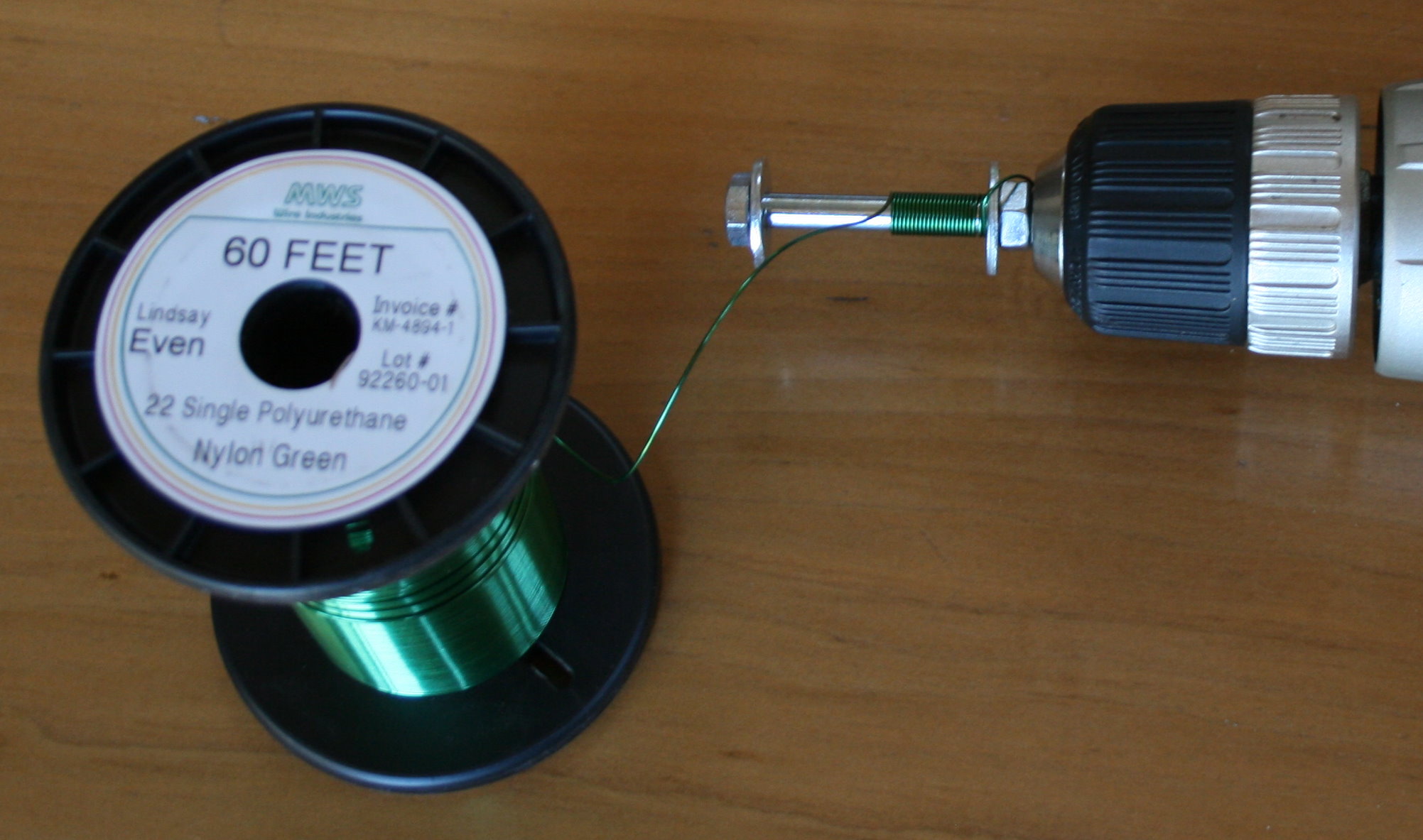
Start out slowly, winding the wire around the bolt. You do not need to be neat about it — I made neat parallel windings so the photo would look nice, but random windings are much easier and faster to make, and the coil will work just fine if it looks a little lumpy, or even very lumpy.
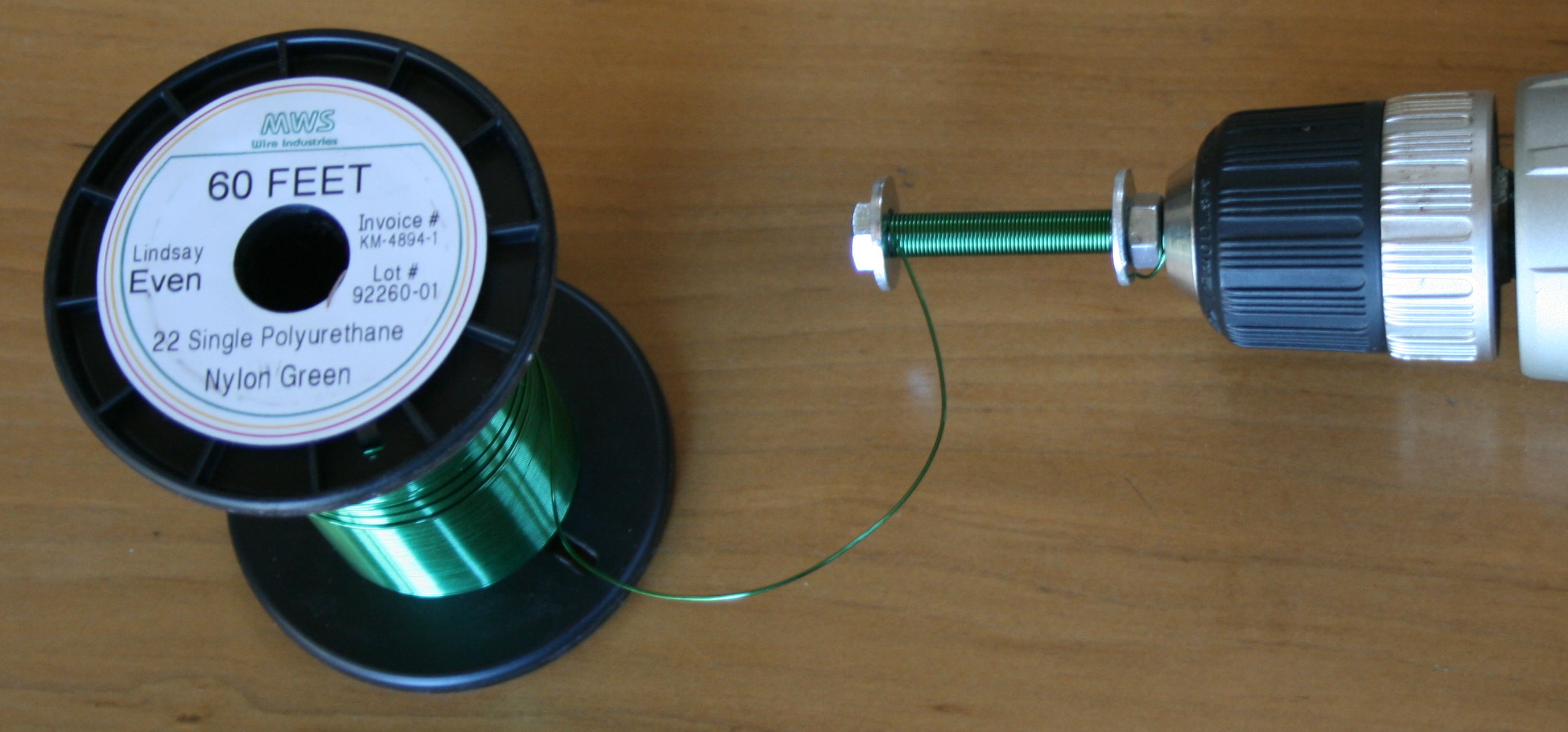
Slow down as the windings approach the washer at the end, so the wire will snug up tightly against it.
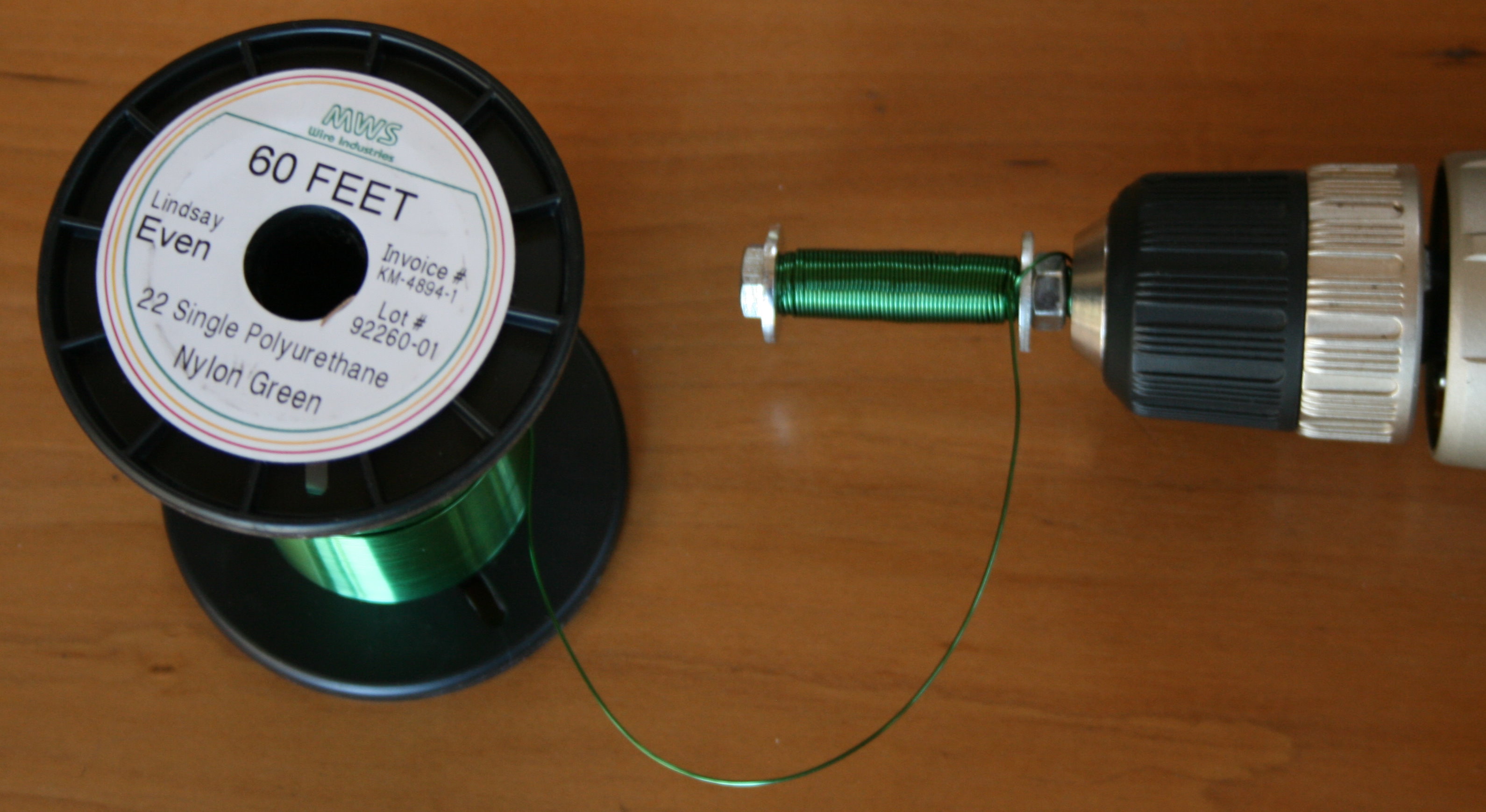
Usually, even with great care, by the time you are half way done, the windings will start to have some small imperfections, just because it is tedious to wind the wire tight and close. Winding it fast and sloppy is a lot more fun.
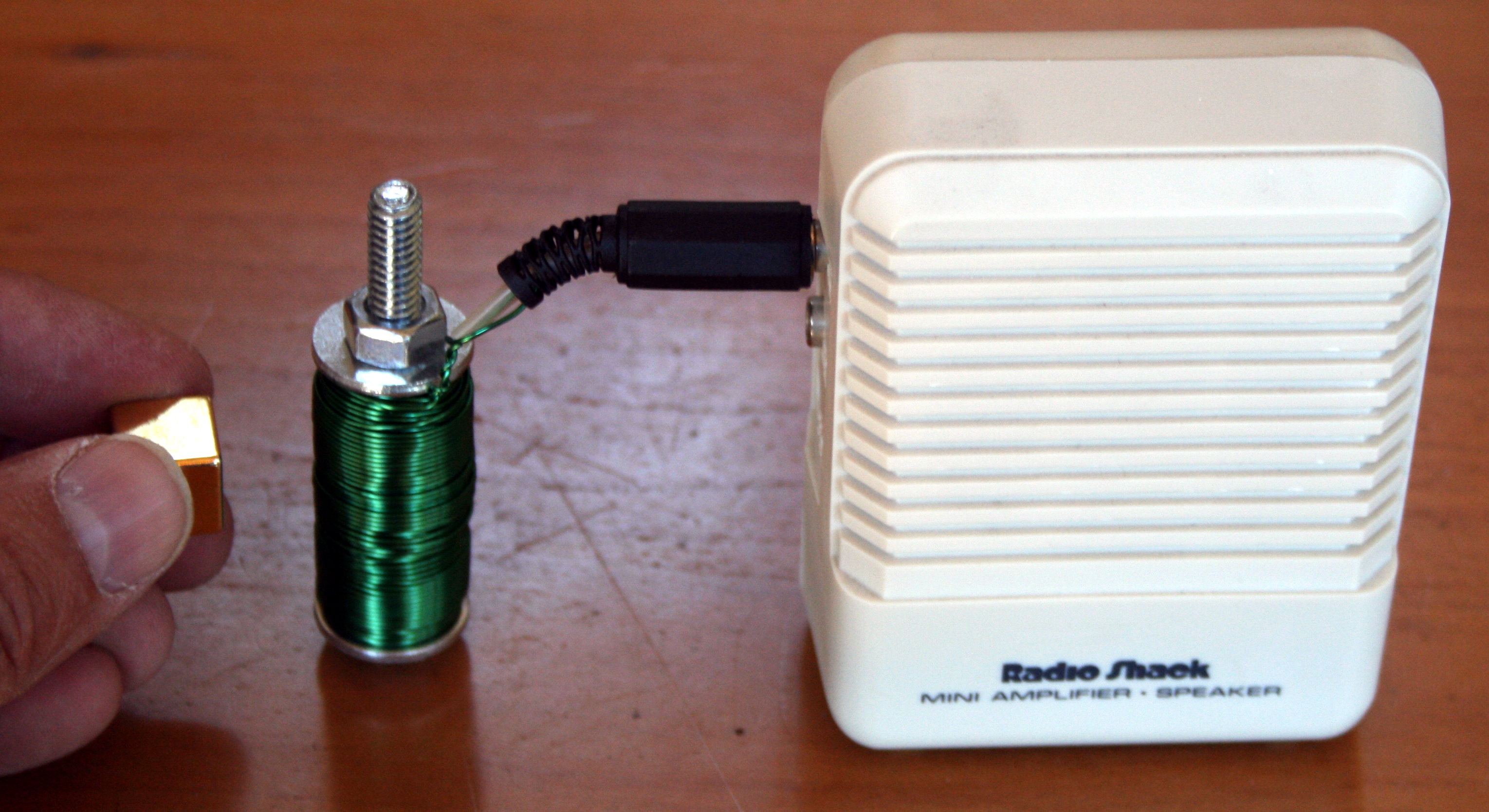
Once the coil is wound, strip off the insulation from the two ends of the wire, and solder a connector onto the ends so it can be plugged into your amplifier.
You can hear the clicks in this video as I wave the magnet around near the coil.
How Does It Do That?
The metal in the bolt is made of many tiny crystals of ferromagnetic steel. A ferromagnetic material is one in which the atoms behave like small magnets. If a crystal is very tiny, all of the magnetic atoms in the crystal will have their north poles pointing in the same direction. If the crystal is a little larger (as most are in the bolt), the atoms will divide into small domains of magnetic alignment, so that one domain will have north pointing in one direction, and the other domain will have north pointing in the opposite direction. This opposite alignment keeps the south end of one domain near the north end of the other.
The reason for this (and the reason why any pair of magnets will align this way when they can) has to do with energy.
As we saw in previous projects, it takes energy to create a magnetic field. The energy is stored in the field. In nature, there is a tendency for things to settle into the lowest energy state. Thus if you use energy to lift a brick off the ground, it will tend to fall back to the ground and lose that energy if you drop it.
The larger a magnetic field is, the more energy is stored in it. If all the atoms were magnetically aligned in the same direction, the magnetic field would be as large as it can get. If half of the atoms turned around the opposite way, there would be no net magnetic field around the metal, and the energy would be zero. So it is the natural tendency of atoms to align themselves in this lowest energy way.
When we move a magnet close to the steel bolt, the atoms in the bolt align opposite to the atoms in the magnet. This reduces the size of the magnetic field around the magnet. The closer the magnet gets to the bolt, the more alignment occurs, and the smaller the magnetic field gets, losing energy. Just like the brick falls to the ground, the magnet and bolt "fall" together. We feel the tug of the attraction between the two. We can extract the energy from the magnetic field by letting it do work, such as raising the bolt off the ground.
There are two things that prevent the atoms in the bolt from aligning perfectly at the atomic level. The first one is that there is an energy cost in building what is called the domain wall between areas of different alignment. The surface area of a domain grows with the square of the radius of the domain. The volume of the domain grows with the cube of the radius. The energy in the magnetic field depends on the volume of the domain. The energy in the domain walls depends on the surface area of the domain. As the domain gets smaller, the ratio of energy stored in the walls to the energy stored in the magnetic field gets larger. At a critical point, the energies are equal, and energy is required to make them smaller. At this point, no more energy can be had from making the domains smaller.
This means that half the atoms in a large domain will flip, so there are two domains with their poles aligned opposite one another. If those two domains are still above the energy limit, they will also split into two, so there are four domains. This continues until all the domains are so small that no more energy can be lost by making them smaller.
The second obstacle to perfect alignment and zero energy is that domains have difficulty forming across crystal boundaries, and across imperfections in the crystal itself. Since it requires energy to divide a domain in the presence of these obstacles, the domain stays larger than it would otherwise be. If we put energy in, by moving a nearby magnet, the obstacle is overcome, and the domain suddenly either divides in two, or grows by flipping a neighboring domain into alignment. This sticking and slipping is what we hear as clicks from the speaker.
This sticking of domains is why some metals become permanent magnets. If we place them in a magnetic field, the domains align. When the field is removed, some of the domains have enough energy to overcome the obstacles will align opposite. But many of them remain stuck, and the metal has a permanent magnetic field as a result.